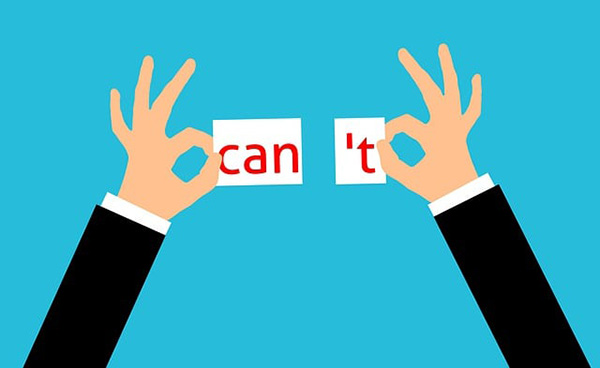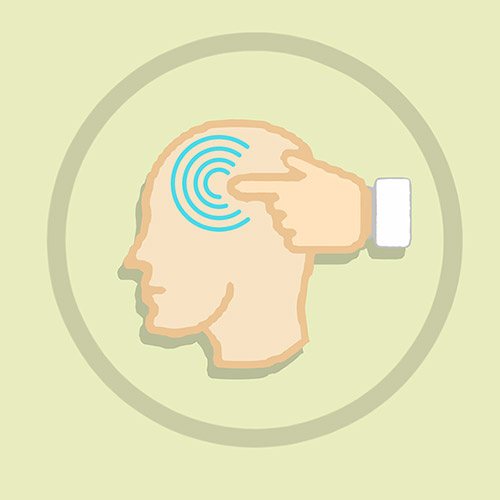In this fourth post in the Combating Burnout series, we describe cognitive-behavioral skills for overcoming burnout.
What and how we think has a tremendous impact on our lives.
Our thoughts play a major role in shaping our moods, our actions, and our well-being, including at work.
In particular, our thinking can help stave off work stress and improve our happiness—or plummet us into burnout, as I describe in an upcoming book, Finding Purpose in a Burned Out World: How You Can Overcome Burnout.
Unfortunately, however, the role of our thinking is often ignored, even as individuals, companies, and societies struggle with an epidemic of burnout.
This is not to say that you are to blame for feeling burned out or that your thinking is the sole cause of burnout.
As described in earlier posts, burnout can result from a number of different factors, including things about your workplace, such as work load, company culture, and the way your manager or supervisor treats you.
Still, the thoughts in our minds can exacerbate work stress and lead to burnout out—or help us to cope and feel better.
Below are seven of the most common thoughts that I have seen in workers who are feeling burned out:
- No one acknowledged or thanked me for all the work I’ve been doing.
- I can’t delegate an assignment or ask for help because I’m a leader and I need to set a good example for other staff (and if I do ask for help, I will look weak or incapable).
- I can’t take some time off now (even though I really need it) because it’s too busy and others need me.
- No matter how much and how hard I work, it doesn’t seem to matter. There’s always more work, more problems.
- I work really hard and do a great job overall and all my manager focuses on was one little problem (which was blown way out of proportion).
- I’ve done so much for my clients/customers, but all they do is complain.
- I’m too busy to take care of myself.
How do you think you would feel if you have those thoughts—especially if they become reoccurring or prominent ideas in your head?

Credit: House of Legacy from Pixaby
If you are like most people, it is likely that those negative thoughts—and many more—would increase your distress and worsen or even cause burnout.
So, what can you do about them?
Cognitive Behavioral Approaches
Cognitive behavioral therapies, pioneered in the 20th Century by Aaron Beck, MD, and Albert Ellis, PhD, are effective for treating anxiety, depression, and a number of other emotional and behavioral conditions.
Most employees struggling with work stress do not necessarily need a mental health therapist.
(Many people may benefit from therapy, however, to help them grow when feeling stuck—and anyone with thoughts about harming themselves or others or with debilitating behavioral health conditions should quickly seek professional help.)
The main point here is that just about anyone can learn and use simple cognitive behavioral techniques to minimize burnout. They are one method within the eight major types of skills taught to combat burnout, as I describe in an upcoming book, Finding Purpose in a Burned Out World: How You Can Overcome Burnout.
The core premise of cognitive behavioral therapies used for behavioral health disorders is also relevant to burnout: our thinking can make a situation worse—or better. Further, at times, all of us think about the situations we face in negative, inaccurate, or simply unhealthy and counterproductive ways.
Once we learn to catch ourselves falling into these negative and unhelpful patterns, we can learn to change our thinking to ways that are more accurate, positive, or adaptive.
ABCDE Thinking
One simple tool that my colleagues (Drs Michelle Salyers, Angela Rollins, Maria Monroe-De Vita) and I used in the BREATHE program to help workers develop healthier, more adaptive thinking is the ABCDE model.
This model begins with the premise that we react to an (A) Activating event with some (B) Belief or thought. Our beliefs then have (C) Consequences, which can include our feelings, actions, or additional thoughts.
Here’s one example using this model as it relates to burnout:
An (A) activating event occurs when an employee works hard on a project and is doing good work, but the supervisor says nothing about the task after it is finished.
The employee might then start having (B) beliefs or thoughts like “No one acknowledged or thanked me for all the work I’ve been doing” (such as Statement 1 in the above list of seven common thoughts that lead to burnout).
Then the employee may have certain (C) consequences or reactions, including feeling unappreciated or depressed or angry. They might also decide to put less effort into future work or even start looking for another job.

Credit: Mohamed Hassen on Pixaby
The employee’s first reaction is stoked by a phrase that is commonly used in our culture: that the supervisor’s failing to acknowledge the person’s work “made me feel that way” (e.g., angry, unappreciated, devalued, etc.).
However, the ABCDE model makes it clear that there is an intervening cause between the (A) Activating Event and the (C) Consequence (unpleasant feeling): specifically, a (B) Belief or thought.
In this example, the employee might have a negative thought, such as that the supervisor doesn’t value their work, or thinks the project was badly done, or is just “using” the employee without any appreciation.
We all frequently have initial negative thoughts about situations and events in our life, including at work. This is part of being human.
But the (D) and (E) components of the ABCDE model allow us the opportunity to take charge of our lives and create more adaptive responses that provide us with better consequences.

Credit: Mohamed Hassen on Pixaby
The (D) component refers to Disputing the negative initial Belief, once we have identified it by examining our thoughts.
The (E) element allows us to substitute a different, more Effective thought that can lead to different effects and consequences.
To return to our example, once you recognize you are having a negative feeling, you can identify the intermediate (B) Belief (e.g., “the supervisor doesn’t appreciate me”), and then you can assess the accuracy of this belief.
For example, you might recall your past performance review when the supervisor gave a positive evaluation and noted your positive contributions, or you might recall other times when the supervisor did indeed thank you for your work and comment on a job well done.
By examining your thoughts, you can dispute the accuracy of the Belief that is causing you distress—and then you can substitute a more effective and healthy belief.

Credit: Jose Aljovin on Unsplash
For example, you might tell yourself that your supervisor is under a lot of stress from upper management, or is worried about a sick relative, or maybe is just having a bad day. Any of those situations—and many more—can make the supervisor forget in the moment to acknowledge and appreciate your work effort.
By changing your thoughts then—even from “my supervisor doesn’t appreciate me” (a very general statement) to “my supervisor is feeling very stressed and forgot to thank me”—can change the way you feel. For example, you are likely to take the oversight less personally, to feel much less (or no) hurt or anger, and perhaps even to feel empathy for your supervisor, who may personally be worried or stressed out.
An important point is that this cognitive approach doesn’t mean you assume a wishful, pollyannish perspective that automatically dismisses your own feelings or any disturbing behavior by another person.
Part of the Disputing stage is looking for evidence for or against your automatic thought that led to the negative feeling. By examining all the evidence from the past and other situations, we can often see our negative thoughts are not accurate—or at least not completely accurate. Human behavior is complex with many causes.

Credit: Mohamed Hassan on Pixaby
In the example, it is true that the supervisor did not acknowledge your work. But rather than assuming the supervisor doesn’t value or appreciate you, other factors—your supervisor being stressed out, worried, having a bad day, etc.—may explain the situation. You are more likely to see the complexity of human interactions and not take them so personally, to not “sweat the small stuff,” and to give the other person a bit of grace.
Using the ABCDE model also still allows you to take assertive behavior. For example, you might ask to talk with your supervisor, saying you had worked hard on the project and would like to check in with them about their thoughts about the work.
In the real world of our work, there are no shortage of situations that might activate negative thoughts and feelings.
In Finding Purpose in a Burned Out World,I identify a total of 14 common thoughts that can contribute to burnout. Beyond these 14, there may be many more that occur in your mind during work.
Fortunately, you can take a cognitive behavioral approach to combat any of these when they create burnout for you.
For any such negative thought, the most important steps for feeling better are to
- recognize that your thoughts can contribute to feeling burned out,
- dispute inaccurate and negative thought patterns, and
- replace them with more effective, healthier thoughts.
You can use a worksheet that corresponds to this cognitive approach in your life to identify, challenge, and replace the negative thinking that leads to burnout.

Credit: Brooke Eagle on Unsplash
Try using this method and tool in your own work—and see if you can’t improve the way you feel.
Core Underlying Assumptions
One final note about using the ABCDE method.
If you pay attention over time to the negative thoughts that cause you emotional distress you may notice particular thoughts are variations on an underlying theme. In cognitive behavioral therapy, this is known as the “core beliefs” that drive reoccurring negative thoughts.
For example, people who think they are inadequate are prone to have specific negative thoughts (such as, “I’m stupid,” “I mess everything up,” “It’s my fault”) which are triggered by stressful situations.
In work situations, I see three underlying core beliefs that are common:
- I need to be recognized and appreciated.
- I have to be effective or excellent at my work to feel good about myself.
- I need to have control.
These common core work beliefs tend to cause burnout when the person feels frustrated or stressed. The frustration then intensifies when the person feels their self-worth is dependent on their work success.
The good news is if you identify a core belief underlying many of the negative thoughts that arise in specific situations, you can work to change your thinking at that core, underlying level.
For example, do you really have to be appreciated to feel good about your work?
And is your self-worth truly dependent on your work success?
You can challenge or dispute these core beliefs and then replace them with more effective, healthier underlying beliefs.
For example, you might tell yourself it is nice to be recognized for your work and it is nice to be successful in your work, but your self-worth is based on many other qualities that you possess, including simply being alive, as people possess a basic worth.
Change is Possible
Changing our thoughts and core beliefs is not always quick or easy, but everyone can do it with practice. Old thinking patterns can be persistent so you may need to consistently work on your thoughts for some time. But we can all change our thoughts and beliefs—and in the process, combat burnout.
In addition to the cognitive-behavioral ABCDE approach, in an upcoming book, Finding Purpose in a Burned Out World: How You Can Overcome Burnout. presents seven other methods, including ones drawn from positive psychology to reduce burnout and improve your well-being.
Lead photo by Magnet-Me on Unsplash



Follow Me: